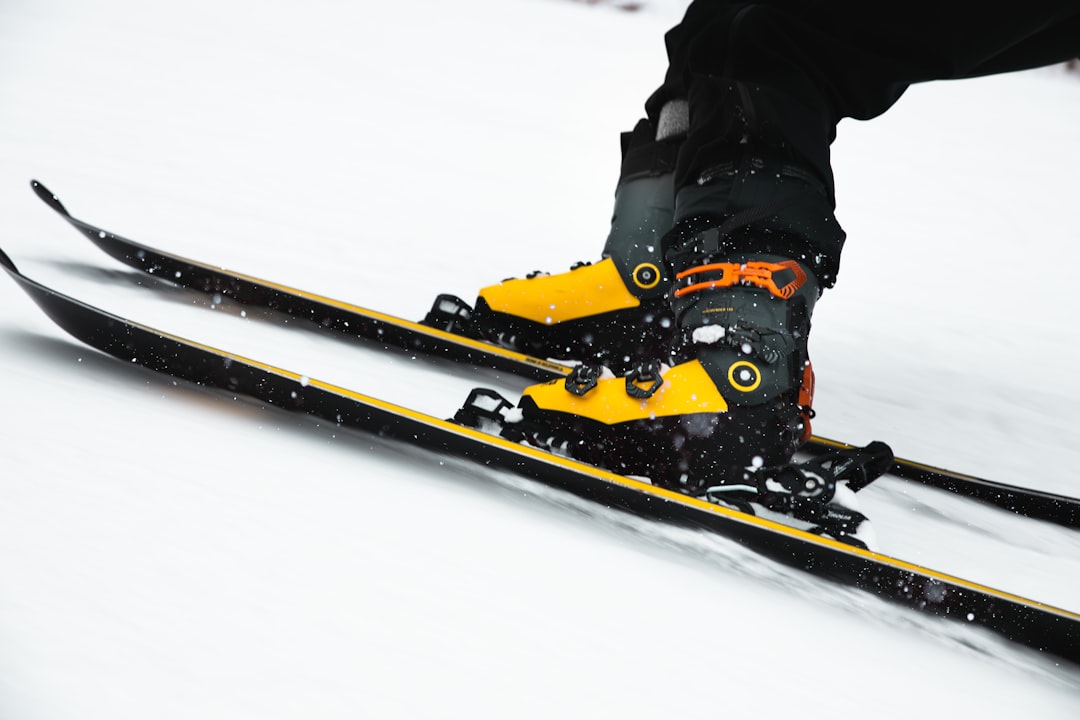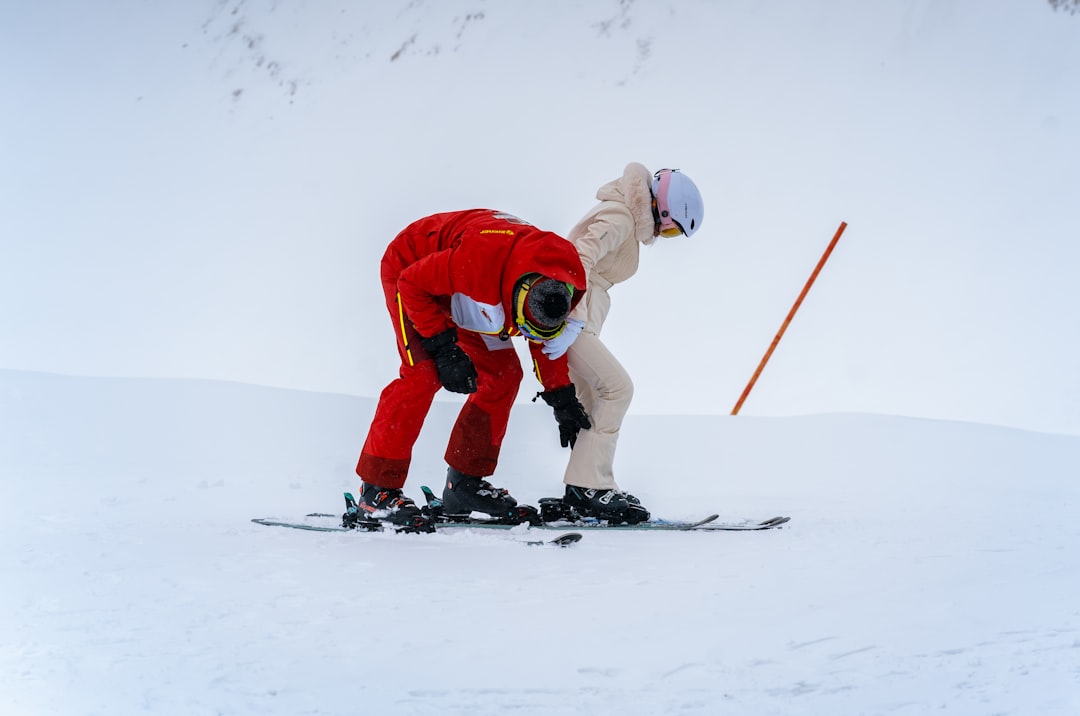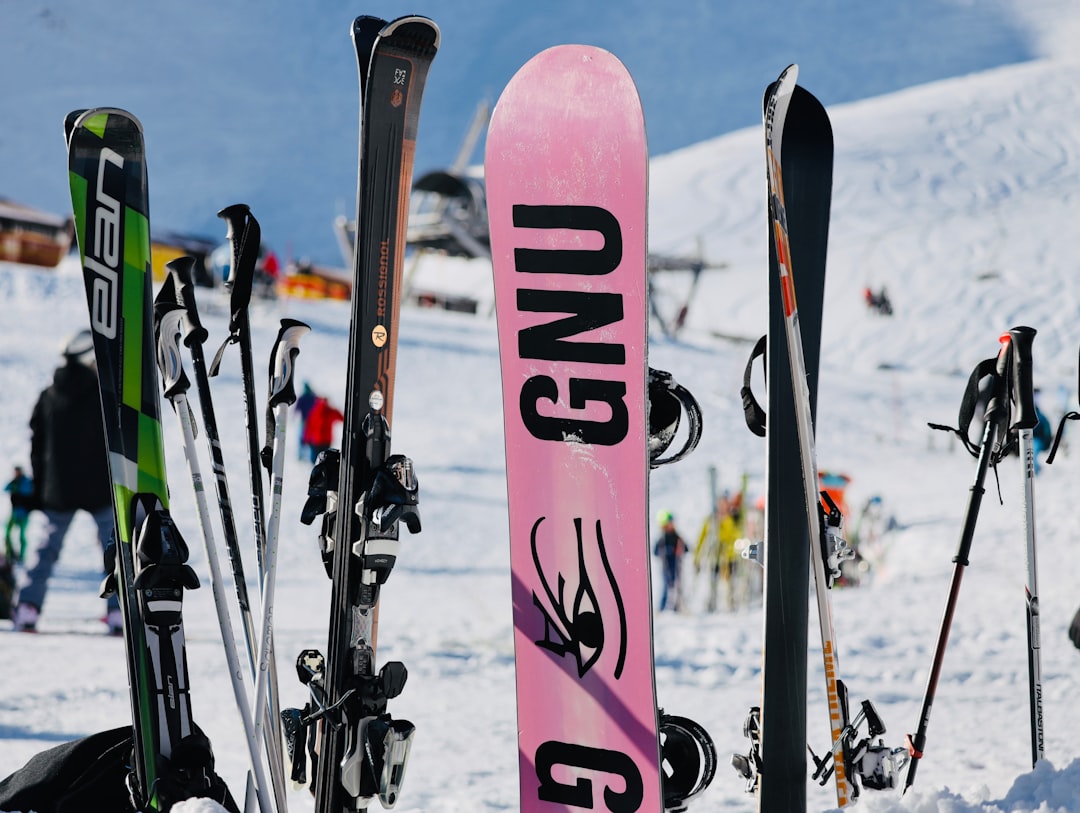

Engage prospects with a scan and streamline customer engagement with FREE QR code marketing tools by Sona – no strings attached!
Create a Free QR CodeFree consultation

No commitment

Engage prospects with a scan and streamline customer engagement with FREE QR code marketing tools by Sona – no strings attached!
Create a Free QR CodeFree consultation

No commitment
In the evolving landscape of ski repair services, connecting with customers where their needs surface—on the slopes, at rental counters, in ski shops, and online—has become a significant challenge. The traditional reliance on static brochures or word of mouth often results in missed opportunities: high-value prospects visit, ask questions, or express interest, yet their details are not captured in the CRM. This means interested skiers slip through the cracks. Growth-focused ski repair businesses are now seeking fresh ways to identify and engage these untapped prospects, streamline conversions from every meaningful interaction, and minimize wasted resources from disconnected workflows.
QR codes have moved beyond gimmicks to become a foundational tool for meaningful, app-free engagement in the ski repair industry. See QR codes in marketing for broader tactics. They transform passive touchpoints into conversion opportunities: a quick scan from a customer at the rental counter can lead to a quote request, appointment booking, or instant access to safety tips, all while capturing valuable data that was previously lost. This enables shops to surface demand the moment it arises, tracking even those anonymous, high-intent visitors who would have otherwise gone unpursued.
By embedding QR codes across all customer-facing surfaces, whether on service desk signage or on rental equipment, ski repair operators can finally bridge the fractured gap between offline interest and digital action. The result is smarter, more targeted follow-up, automated lead enrichment, and clear measurement of every interaction’s impact on business growth and customer satisfaction. This guide explains how to deploy QR codes as a strategic lever for measurable growth, improved retention, and a better, more connected ski equipment maintenance experience.

QR codes bridge the persistent gap between in-shop experiences, printed materials, and digital actions, ensuring that every interaction with a skier becomes a trackable opportunity for conversion. When a scan routes to a mobile-first landing page for quotes, bookings, or how-to content, you transform idle curiosity into an actionable step and a captured signal that fuels analytics and follow-up.
Outdated methods like paper sign-in sheets, generic business cards, and passive brochures fail to capture the speed, detail, or context needed to convert interest into bookings. Google Forms guide QR-powered forms, instant quote flows, and self-serve booking links enable frictionless data capture at the moment of engagement. The shift reduces the number of missed high-value prospects who never make it into the CRM and improves staff efficiency during peak traffic.
By automating intake and tracking via QR codes, ski repair teams resolve a long-standing pain point: form abandonment and information loss in busy retail environments. You can route scans to maintenance education, repair status updates, and mobile intake forms that work on any device. This workflow frees shop staff to focus on diagnostics and craft, while your marketing system quietly captures demand that used to vanish.

Ski repair services regularly encounter hurdles such as anonymous walk-ins, fleeting customer interest at rental counters, and untraceable leads from physical events. These visibility gaps mean potential revenue goes unrealized and prospective customers may leave without ever connecting. QR codes close this gap by offering instant, app-free actions that turn curiosity into conversion while preserving data for later use.
For ski repair operators, the biggest advantage is how quickly a QR-driven journey moves someone from intent to outcome. A scan on an appointment card can load a prefilled booking form with the store location and service category. A code on a shop poster can present transparent pricing, while a code on repaired equipment can trigger a review request. Each scan pairs a useful action for the customer with the analytics you need to improve operations.
As shops adopt QR-driven workflows, the measurable advantage becomes clear: more appointment requests, higher post-service review rates, and fewer missed leads. Operators can finally quantify which physical touchpoints convert, then double down on what works throughout the season.

Ski repair shops need versatile QR code formats since customer intentions vary widely from check-in to post-service follow-up. Matching the format and destination to the moment creates a smoother experience and a cleaner data trail.
Focus on formats that simplify booking, communication, and education. Use dynamic codes when you need the flexibility to adjust destinations during the season and static codes for evergreen assets that rarely change.
With Sona QR, you can create and manage all of these formats in one place, assign each to a campaign, and monitor performance. Dynamic codes let you swap a winter tune-up landing page for a spring storage-and-wax guide without reprinting signage.

Many high-intent ski repair journeys start offline and remain invisible to traditional tracking. The key to growth is to place QR codes at physical touchpoints where questions and buying signals naturally arise, then route scanners to a mobile experience that completes the action and records the intent.
Mapping store flow and observing customer behavior helps identify prime placements. Look for lines, waiting areas, and browsing zones where people have a few seconds to scan. Add a compelling benefit such as Instant estimate, Tune-up times today, or Save 10 percent on pre-season service to nudge immediate action.
By focusing QR integration where traditional systems fall short, ski repair shops capture previously anonymous demand. Every poster, tag, and receipt becomes a gateway to conversion and a datapoint for smarter marketing.
QR codes are most valuable when they solve specific workflow problems and create effortless next steps for the customer. Selecting three to five high-impact use cases is a practical way to start, then expand once you see results.
Position each QR code at the place where it makes the most sense for the action you want. For example, put an instant estimate code on the counter where pricing questions happen, and a review code on the equipment when the customer picks it up.
Each use case targets a common friction point in the ski repair customer journey. When these points convert reliably, the revenue impact is immediate and measurable.
Every QR scan contains intent, context, and timing. By deploying many codes across your footprint, you can segment audiences automatically and use those segments for precise retargeting and personalized nurture. See intent-driven retargeting for tactics.
Think about audience distinctions that matter in ski repair: locals versus tourists, renters versus gear owners, wax-only visitors versus repair customers, first-timers versus loyal clients. Each segment warrants a different message and cadence.
Over time, these segments compound. You will build a durable base of intent-rich profiles that convert at lower cost and improve with each season as data quality rises.
Most ski repair teams use a mix of print, in-store signage, events, and digital channels. QR codes act as the connective tissue that unifies the experience and measurement across them. When every surface links to a mobile experience, and every scan fuels a system of record, you can orchestrate coherent journeys from first interest to loyal repeat business.
Use QR codes to remove friction between channels and to unlock precise attribution. The same customer can scan a code at the lift line, later receive a personalized email, and finally book via a remarketing ad. With Sona QR as the backbone, each touch contributes to a complete view of influence and ROI.
QR codes are the offline onramp to your digital engine. A centralized platform like Sona QR lets you manage all codes, monitor performance, and sync scan data with your CRM and ad tools so every channel contributes to one source of truth.
A strong QR program starts with clear goals and meticulous execution. The following steps translate ski repair use cases into a repeatable launch process supported by data and iteration. Use these steps to align your team, streamline production, and prevent common pitfalls. Start creating QR codes for free.
Before you deploy, walk the shop and the rental floor to identify the best sightlines and waiting zones. Test sight distance, lighting, and customer flow. A code that looks great on a mockup but is hard to scan at the counter will underperform.
Focus on a single, high-impact outcome that aligns with peak demand. For example, Scan to book next-day edge repair at the rental counter or Scan to request a seasonal binding check near lift lines.
Match your code type to flexibility and data needs. Ski repair is seasonal and offer-driven, which often makes dynamic codes the better choice.
Design for the real world, not the design file. Ensure scannability under bright shop lights and low-light resort hallways.
Roll out where attention and intent are highest. Prioritize locations linked to common questions and wait times.
Treat QR like any performance channel. Monitor frequently during the first two weeks and adjust quickly.
Attribution has long been a challenge for ski repair services because so many interactions happen in physical spaces that are hard to measure. QR analytics change that by tying scans to actions, actions to contacts, and contacts to revenue. Once this link is in place, operators can invest confidently in the placements and messages that produce bookings and upsells.
You should measure scans, track behavior after the scan, and match the person to a customer profile whenever possible. This lets you prioritize high-intent leads, recover abandoned inquiries, and forecast demand more accurately by channel and time of day.
With Sona QR and Sona.com, you can close the loop: scans feed engagement dashboards, CRM records update automatically, and revenue gets attributed through identity resolution and multi-touch models. This turns QR from a convenience into a measurable growth driver.
Scaling QR programs requires rigor and creativity. The most successful ski repair teams standardize how they track, train, and iterate while experimenting with fresh placements and offers that match the rhythms of the season.
Start by aligning your staff. Train counter teams to point out codes and explain benefits succinctly. Reinforce that QR is not a replacement for service but a tool that speeds intake and increases transparency for customers.
Treat these tips as an operating system for QR. Consistency in tracking and staff enablement will compound results across seasons.

Ski repair businesses that commit to QR-led journeys report tangible gains in conversion and loyalty. These examples illustrate how creative placement and clear CTAs translate into measurable outcomes.
Use these as a starting point, then adapt to your shop’s layout, staffing, and customer mix. Small changes in phrasing or location can produce outsized results once you are tracking with precision.
The common denominator across these wins is disciplined attribution and fast iteration. Measure, learn, and redeploy budgets toward the specific surfaces and messages that perform.
Success often comes down to execution details. A code placed a few inches too low or a vague CTA can cut scan rates dramatically. Conversely, a crisp benefit statement and a high-contrast code at eye level can unlock outsized performance.
Avoid guessing. Test codes in the exact lighting, distance, and angles your customers will experience. Have staff scan with the same devices your audience uses. Then fix small issues such as glare, clutter, or confusing copy before scaling.
QR codes have fundamentally changed how ski repair services engage, track, and convert. With every scan, a once-anonymous interaction becomes a measurable opportunity. That shift closes the gap between intention and action, reduces missed bookings, and enriches customer profiles for smarter retention playbooks.
By elevating engagement at critical touchpoints, from on-mountain signage to post-service feedback, ski repair operators can make sense of fragmented journeys and optimize for the moments that matter most. Teams deliver the operational efficiency and personal guidance that modern customers expect, while management gets the data needed to invest with confidence.
Embrace QR-powered processes to raise visibility, recapture lost prospects, attribute marketing success, and transform fleeting interest into long-term loyalty. The industry is already seeing the results: higher booking rates, deeper client relationships, and a more resilient, data-driven approach to growth. With Sona QR to generate and track codes, and Sona.com to attribute revenue across touchpoints, you can launch quickly and improve continuously throughout the season.
QR codes have transformed ski repair services from simple drop-off points into interactive, data-driven customer engagement hubs. Whether it’s streamlining customer acquisition, enhancing service transparency, or enabling seamless appointment scheduling, QR codes replace outdated processes with instant, mobile-friendly actions that capture valuable insights and boost conversions. Imagine customers effortlessly accessing repair status updates or exclusive offers with a quick scan—turning routine visits into meaningful brand interactions.
With Sona QR, you can create dynamic, trackable QR codes in seconds, update campaigns on the fly without reprinting, and directly link every scan to revenue growth. No more guessing which marketing efforts drive repeat business—just smarter, more profitable customer journeys tailored to the ski repair industry. Start for free with Sona QR today and turn every scan into a loyal customer and increased sales.
Look for ski repair shops that use QR codes at rental counters, ski shops, and on equipment to provide instant quotes, appointment bookings, and safety tips, ensuring they capture demand and offer measurable service quality.
Common repairs include edge tuning, binding checks, waxing, and fixing damage to skis or snowboards, with services often promoted via QR codes for easy booking and quotes.
Repair pricing is often accessible through QR codes on shop posters or counters that link to transparent pricing tables, allowing customers to get instant estimates tailored to their equipment and needed services.
While the article does not specify signs, ski repair services often provide binding safety checks and maintenance tips accessible via QR codes to help customers identify when repairs are necessary.
The article focuses on ski repair services and does not provide specific instructions for home ski boot repairs but suggests that educational content like DIY maintenance guides can be accessed through QR codes for basic care tips.
Professional ski repair shops increasingly use QR codes linked to mobile booking pages, quote requests, and contact forms found on their physical touchpoints and websites, enabling easy online access to services.
Best practices include regular waxing, edge care, binding safety checks, and proper storage, with shops offering maintenance tips and educational content accessible through QR codes.
While the article does not detail this, ski repair services typically provide diagnostics and can advise if equipment is repairable, often facilitated by appointment bookings via QR code scans.
Reputable services can be identified by their use of QR code-enabled workflows that capture customer intent, offer instant quotes, and provide transparent service options, helping ensure reliable and trackable repairs.
After repairs, scan QR codes on repair tags or receipts to access status updates, post-service feedback forms, and safety guides, ensuring transparency and ongoing maintenance support from the repair shop.
Use Sona QR's trackable codes to improve customer acquisition and engagement today.
Create Your FREE Trackable QR Code in SecondsJoin results-focused teams combining Sona Platform automation with advanced Google Ads strategies to scale lead generation

Connect your existing CRM

Free Account Enrichment

No setup fees
No commitment required

Free consultation

Get a custom Google Ads roadmap for your business






Launch campaigns that generate qualified leads in 30 days or less.
